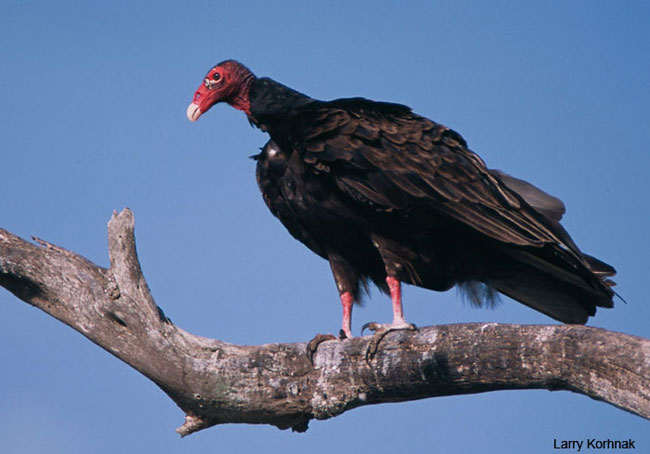Turkey Vulture

Photo credit: Larry Korhnak
The turkey vulture has a reddish bald head that resembles that of the adult male wild turkey. However, young turkey vultures have a black head.
These large black birds are mostly seen high in the sky with their wings extended, gliding on rising warm air currents. While gliding, they use their super sense of smell to detect the odors of decaying animals. They can detect these odors for up to 12 miles. Other vultures that don't have as good sense of smell (like the black vulture) will follow them.
How can they eat dead animals without getting sick? Part of the answer is that their stomach acid is 100 times more acidic than a human stomach. In fact, vultures will use their stomach acid as a defense weapon, and will vomit on animals that threaten them.
Some people think vultures spread disease, but they may actually help stop its spread by eating dead animals and destroying disease organisms with their strong stomach acid.

